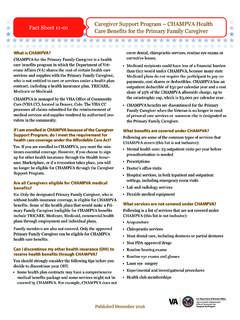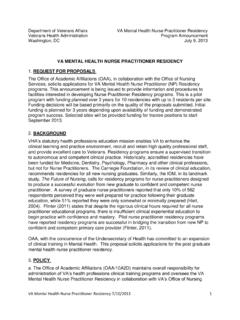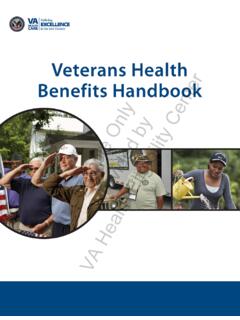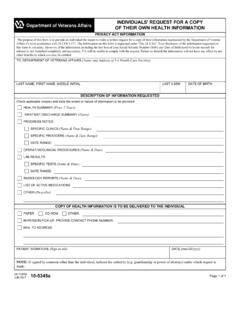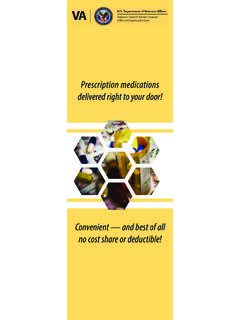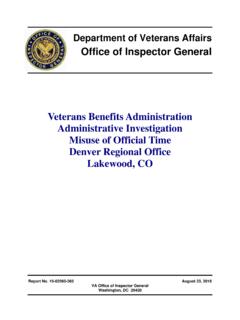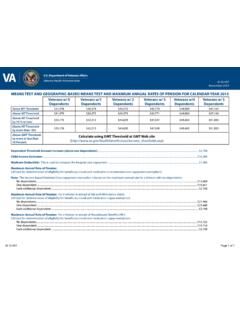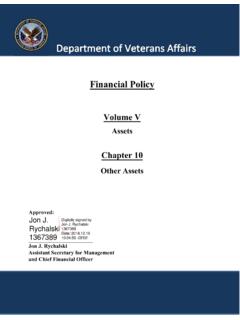Transcription of Psychiatric – Mental Health Nursing
1 Office of Nursing Services (ONS). Mental Health Field Advisory Committee Psychiatric Mental Health Nursing Orientation Guidebook Office of Nursing Services Mental Health Field Advisory Committee Acknowledgements The members of the committee wish to thank the leaders of Office of Nursing Services (ONS). for developing the Clinical Practice Program and providing the resources to make this publication possible. We are grateful to Dr. Elizabeth Czekanski, Mental Health Clinical Nurse Advisor, for the support, leadership, and guidance provided. This work was developed in the spirit of the ONS mission and vision for excellence in Nursing care and we are pleased to offer it to our nurse colleagues. Field Advisory Committee members include: MH FAC Advisor: Elizabeth Czekanski, DNP, MS, RN-BC, NE-BC, VHA-CM.
2 Kayla Cross, RN-C, MSN, MA (Editor in Chief). Carol Essenmacher, DNP, PMHCNS-BC, C-TTS. Nancy Faulk, PhD, RN, CNS, NE-BC. Karin Glenn, DNP, RN, PMHNP-BC. Kristine Theis, FNP, MSN, RN. Melissa Smith, RN-BC, MSN. Anne Marie Craman, RN, MSN, PMHCNS-BC, NE-BC. Kat Zervas, RN, MSN Educator Special thank you to the former Field Advisory Committee members: Carol Hawthorne Rumpler, MS, PMHCNS-BC. Bernadette Y. Jao, DNP, MSN, RN-BC. Sharon Valente, PhD, APRN-BC, FAAN. Doris C. Vallone, PhD, PMHCNS-BC. Veterans Health Administration Office of Nursing Services MISSION. The Office of Nursing Services provides leadership, guidance, and strategic direction on all issues relating to Nursing practice and Nursing workforce across the continuum of care.
3 ONS is committed to aligning Nursing strategic goals with field-based operation and organizational priorities. VISION. VA Nursing is a dynamic, diverse group of honored, respected, and compassionate professionals. VA is the leader in the creation of an organizational culture where excellence in Nursing is valued as essential for quality healthcare to those who served America. Table of Contents Module1: Safety Inpatient Mental Health Environment of Care Therapeutic Milieu Module 2: Communication Therapeutic Communication Nurse-Veteran Relationship Documentation Module 3: Patient Centered Care Recovery Culture Advanced Directives Ethics Nurse Led Psycho-educational Groups Peer Support Trauma Informed Care Module 4: Psychiatric Nursing Assessment Psychiatric Nursing Assessment suicide Risk Assessment Pain Substance Use and Withdrawal Assessment Disruptive Behavior Module 5: Mental Health Disorders Post-Traumatic Stress Disorder Depressive Disorder Bipolar Disorder Schizophrenia Spectrum and other Psychotic Disorders Substance Use Disorder (SUD).
4 Module 6: Psychopharmacology Antipsychotics Mood Stabilizers Antidepressants Anxiolytics Module 7: Professional Development Certification Training and Resources Mentoring Appendix A List of Potentially Hazardous Items Appendix B Evaluation of the Therapeutic Milieu Exemplar Appendix C Unit Guideline Consent Example Appendix D Community Meeting Template Appendix E Treatment Program Schedule and Progress Log Example Appendix F Assessment Documentation Example Appendix G - Sample Group Note Appendix H Group Note Template Appendix I Treatment Plan Process Crosswalk Appendix J Nursing Interventions in the Acute Setting Appendix K Review of Psychopharmacology Appendix L Glossary of Mental Health Terms/Phrases 1.
5 Module One Safety Objectives 1. Identify the safety assessment process for the inpatient environment of care. 2. Discuss options for maintaining a safe environment of care. 3. Define Therapeutic Milieu . 4. Assess practice setting using the questions provided. 5. Assess your personal attitudes related to the therapeutic milieu. Introduction The creation and maintenance of a safe environment in the acute inpatient Psychiatric setting is the cornerstone of the Psychiatric Mental Health nurse's (P-MHN) role and responsibility. The role of the P-MHN to assess for environmental and individual safety is active and on-going in order to prevent self-harm or harm to others in the hospital setting. The P-MHN has a responsibility in creating and supporting a therapeutic milieu which incorporates the elements of safety, support, and structure, while creating a social environment that encourages self- understanding and validation of feelings.
6 The acute Psychiatric environment of care (EOC), which promotes safety and recovery, is imperative to optimize patient outcomes. This module will review the environmental and clinical assessment process for nurses in the acute Psychiatric setting. Inpatient Mental Health Environment of Care suicide attempts and suicide completion continue to occur in the acute inpatient Psychiatric setting in hospitals across the The physical environment is the root cause of the majority 2. of inpatient suicides. While suicide on VA inpatient Mental Health units is extremely rare, hanging continues to be the most common method for inpatient suicide . Nursing staff are responsible to create and maintain a safe environment of care on the acute inpatient unit.
7 Nurses are aware of the potential areas of risk or harm to the Veteran and mitigate that risk through assessment, monitoring, and intervention. During construction of new units or renovation of existing units, Nursing staff should be involved in the planning and design process to help anticipate areas of risk and promote a safe and recovery oriented milieu. Safety and the Mental Health Environment of Care (MHEOC): The physical environment on an acute inpatient unit is important to Mental Health treatment and must support recovery. The environment must represent hope, healing, and wellness while maintaining safety (Department of Veterans Affairs (VA), 2013). A safe MHEOC is important for the Health and wellbeing of Veterans and staff.
8 Safety features can be built into the MHEOC as a preventive measure but ultimately, safety relies on constant staff awareness, action and communication. Safety relies on the clinical expertise of unit staff who utilize the therapeutic relationship, milieu management, and safety management systems in place to maintain a safe and secure environment. Nursing staff provides 24/7 care to inpatient Veterans. They are responsible for assessing and maintaining unit safety and promoting a therapeutic milieu. Staff awareness and mindfulness of safety and the MHEOC are paramount. Concerns are promptly communicated to the entire team to be immediately addressed. Safety Assessment suicide prevention on an acute inpatient unit must be an all staff/all shift effort, 24/7.
9 Most inpatient suicides occur on the 2nd and 3rd shift, so all shifts must be actively involved in ongoing risk assessment. Involvement of all staff takes the risk assessment and safety outcomes out of the hands of a few and places it on the shoulders of the entire Mental Health team. Creating a safe environment of care requires a clinical assessment by the P-MHN. The MHEOC. assessment is an extension of the patient assessment, completed to promote safety and mitigate individual risk for harm. The combination of clinical assessment and environmental assessment maximizes unit risk reduction efforts. Initial and ongoing clinical assessment remains the single best method for identifying individuals at risk for hurting themselves or others.
10 This coupled with the MHEOC assessment and promotion of a safe space for healing supports individual and group recovery on the acute inpatient unit. 3. Part of the MHEOC assessment is identifying which objects are hazardous items, formerly identified as contraband', and have the potential to result in harm to the Veteran. Identifying hazardous items (see Appendix A for sample list) and reducing access to potential hazards in the environment is crucial for the safety of all on the unit. Checks for hazardous items must be performed at time of admission and as clinically appropriate per facility policy ( when Veterans return from off-unit activities and when Veterans have been with visitors). The process must be respectful and sensitive to Veteran dignity while ensuring that items which may create a safety risk are not brought onto the unit.
